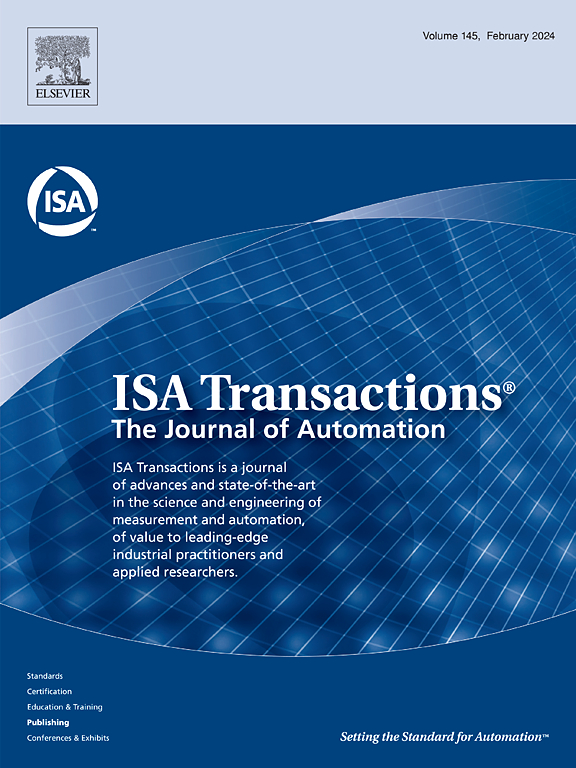Motion control strategy for robotic arm using deep cascaded feature-enhancement Bayesian broad learning system with motion constraints
IF 6.3
2区 计算机科学
Q1 AUTOMATION & CONTROL SYSTEMS
引用次数: 0
Abstract
Intelligent control strategies can significantly enhance the efficiency of model parameter adjustment. However, existing intelligent motion control strategies for robotic arms based on the broad learning system lack sufficient accuracy and fail to account for the effects of joint motion limitations on overall control performance. To address the aforementioned challenges, this paper proposes a robotic arm motion control strategy based on a deep cascaded feature-enhanced Bayesian broad learning system with motion constraints (MC-DCBLS). Firstly, the motion control strategy based on a deep cascaded feature-enhanced Bayesian broad learning system (DCBBLS) is designed, which simplifies the modeling process and significantly improves control accuracy. Secondly, the motion constraint mechanism is introduced to optimize the control strategy to ensure that the robotic arm motion does not break through the physical limit. Finally, the parameter constraints of the control strategy network were obtained by introducing the Lyapunov theory to ensure the stability of the robotic arm motion control. The effectiveness of the proposed control strategy was validated through both simulations and physical experiments. The results demonstrated that the strategy significantly improved the accuracy of robotic arm motion control, with the root mean square error (RMSE) in position tracking reduced to 0.038 rad. This represents a 61.26% reduction in error compared to existing techniques.
使用带运动约束的深度级联特征增强贝叶斯广义学习系统的机械臂运动控制策略。
智能控制策略可以显著提高模型参数调整的效率。然而,现有的基于广义学习系统的机械臂智能运动控制策略缺乏足够的精度,并且没有考虑关节运动限制对整体控制性能的影响。为了解决上述问题,本文提出了一种基于运动约束的深度级联特征增强贝叶斯广义学习系统(MC-DCBLS)的机械臂运动控制策略。首先,设计了基于深度级联特征增强贝叶斯广义学习系统(DCBBLS)的运动控制策略,简化了建模过程,显著提高了控制精度;其次,引入运动约束机制对控制策略进行优化,保证机械臂运动不突破物理极限;最后,通过引入李雅普诺夫理论,得到控制策略网络的参数约束,以保证机械臂运动控制的稳定性。通过仿真和物理实验验证了所提控制策略的有效性。结果表明,该策略显著提高了机械臂运动控制的精度,位置跟踪的均方根误差(RMSE)降至0.038 rad,与现有技术相比,误差降低了61.26%。
本文章由计算机程序翻译,如有差异,请以英文原文为准。
求助全文
约1分钟内获得全文
求助全文
来源期刊

ISA transactions
工程技术-工程:综合
CiteScore
11.70
自引率
12.30%
发文量
824
审稿时长
4.4 months
期刊介绍:
ISA Transactions serves as a platform for showcasing advancements in measurement and automation, catering to both industrial practitioners and applied researchers. It covers a wide array of topics within measurement, including sensors, signal processing, data analysis, and fault detection, supported by techniques such as artificial intelligence and communication systems. Automation topics encompass control strategies, modelling, system reliability, and maintenance, alongside optimization and human-machine interaction. The journal targets research and development professionals in control systems, process instrumentation, and automation from academia and industry.
 求助内容:
求助内容: 应助结果提醒方式:
应助结果提醒方式:


